I am trying to use a polynomial expression that would fit my function (signal). I am using numpy.polynomial.polynomial.Polynomial.fit function to fit my function(signal) using the coefficients. Now, after generating the coefficients, I want to put those coefficients back into the polynomial equation - get the corresponding y-values - and plot them on the graph. But I am not getting what I want (orange line) . What am I doing wrong here?

Thanks.
import math
def getYValueFromCoeff(f,coeff_list): # low to high order
y_plot_values=[]
for j in range(len(f)):
item_list= []
for i in range(len(coeff_list)):
item= (coeff_list[i])*((f[j])**i)
item_list.append(item)
y_plot_values.append(sum(item_list))
print(len(y_plot_values))
return y_plot_values
from numpy.polynomial import Polynomial as poly
import numpy as np
import matplotlib.pyplot as plt
no_of_coef= 10
#original signal
x = np.linspace(0, 0.01, 10)
period = 0.01
y = np.sin(np.pi * x / period)
#poly fit
test1= poly.fit(x,y,no_of_coef)
coeffs= test1.coef
#print(test1.coef)
coef_y= getYValueFromCoeff(x, test1.coef)
#print(coef_y)
plt.plot(x,y)
plt.plot(x, coef_y)

